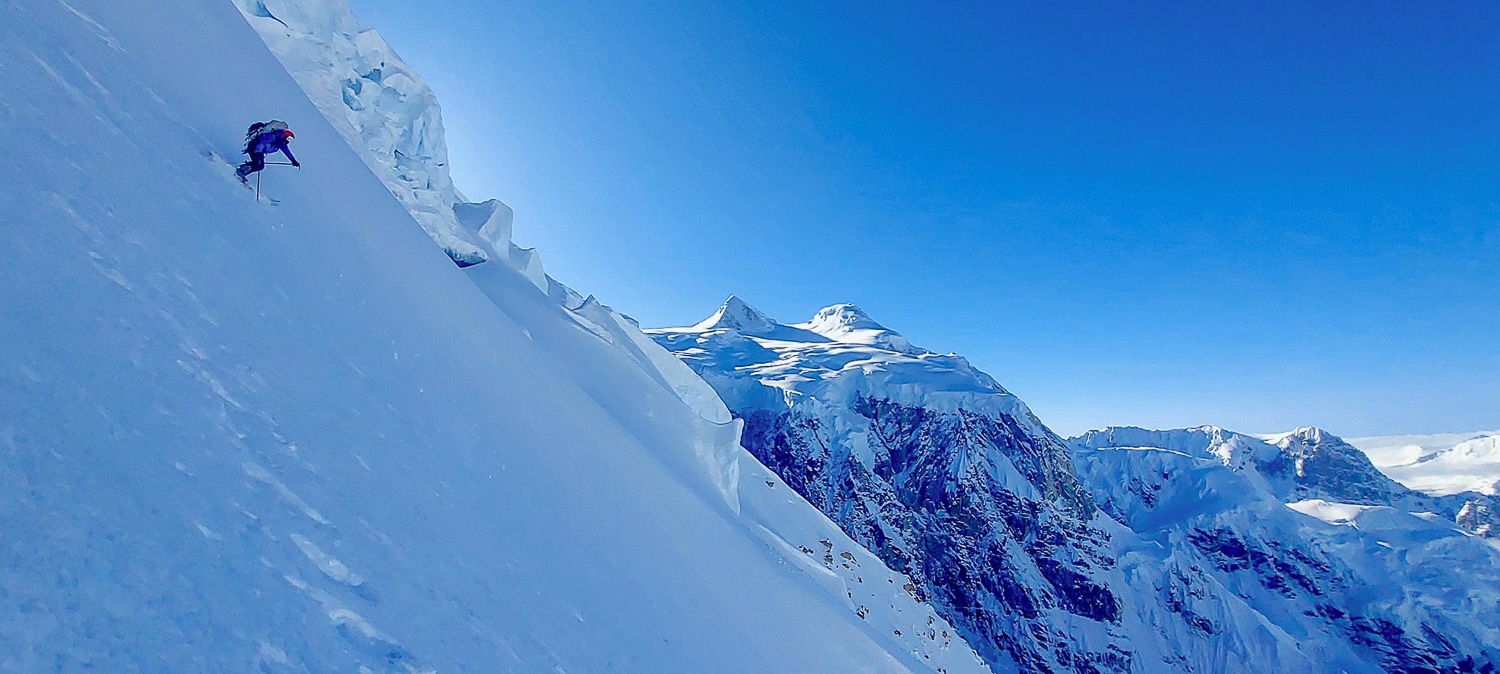I remember the instance I pivoted toward lighter gear. I was maybe 14 years younger and chasing my friend Tosch, who remains ~24 years younger, when I bent over, maybe dry heaved, and enveloped myself in a big puffy jacket. We were a few hundred feet below the top of Rainier. I stayed put. Tosch went on to tag the summit and return. A smidge shy of the ~9000’ dance up Tahoma via the Fuhrer Finger, I began the conversion to gram counter.
The day began well. I was on K2 Wayback 88s mounted with Dynafit Speed Turns and lugged (even then, I knew they were too heavy) Black Diamond Quantum boots on the feet. The setup, which skied damn great, was matched with undainty (and sluggish) BD nylon carpets. Thankfully, the skis were on my back for at least half the ascent.
“The draft did not last long. And despite it being a windless day, a mighty headwind soon blew and set me straight. I could not keep up with Tosch. I’m sure fitness had something to do with it. It was easier to blame the gear.
I puked 10 feet from the car on the descent. Then we drove home.
I know for sure I got ahead of myself. I recall the purple and creamsicle sky at sun up. I recall sitting in Tosch’s draft and thinking, “No problem sticking with Tosch.” Tosch strode along in wafer light Movement planks. And his bindings, I swear, had I weighed them, would have been at most 50g. Maybe even 30g.
The draft did not last long. And despite it being a windless day, a mighty headwind soon blew and set me straight. I could not keep up with Tosch. I’m sure fitness had something to do with it. It was easier to blame the gear.
I puked 10 feet from the car on the descent. Then we drove home.
Oh So Light
Next November, new glossy Dynafit PDG skimo boots were feathers on my feet. If the boots were feathers, the matching PDG skis were wings. (I had to keep it semi-real and mounted the skis with Speed Turn bindings—I know, it makes a skimo-er gag. But I had a pair lying around.)
I loved skiing firm snow on the setup, and the ski-boot combo was divine on the occasional traverse. My ski partner John had his Tosch moment, too, although he’d been drafting me, making it a somewhat less effective draft, and the pace was more pedestrian. But anyhow, John saw the lightness and promptly lightened his wallet. Some pingy carbon skimo planks from LaSpo/Ski Trab arrived, as did some vintage LaSpo skimo boots.






Leave a Reply
You must be logged in to post a comment.